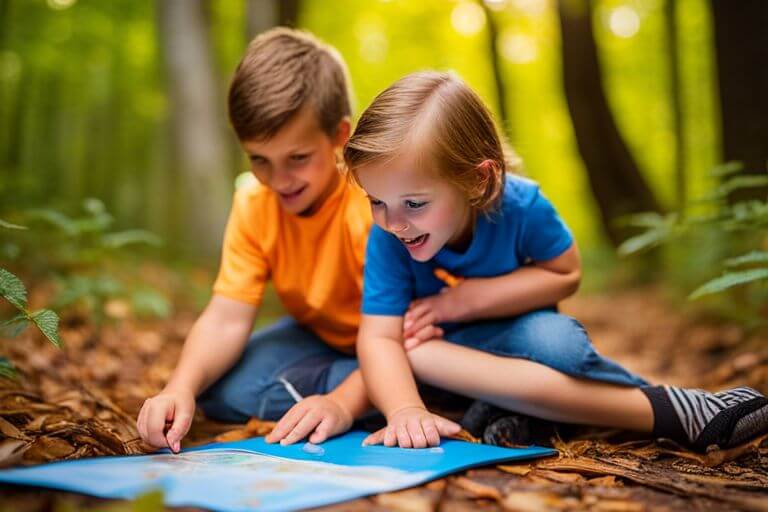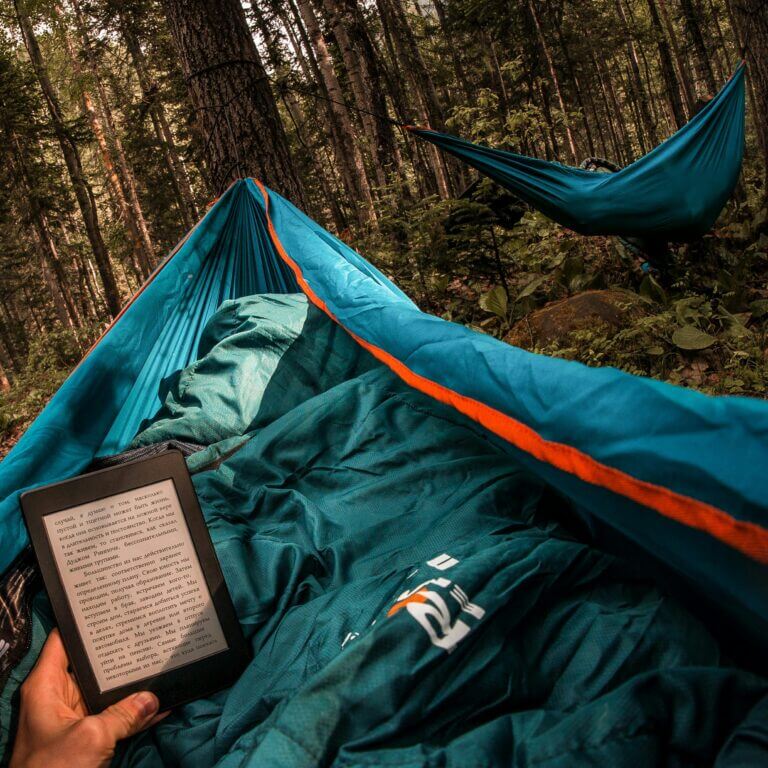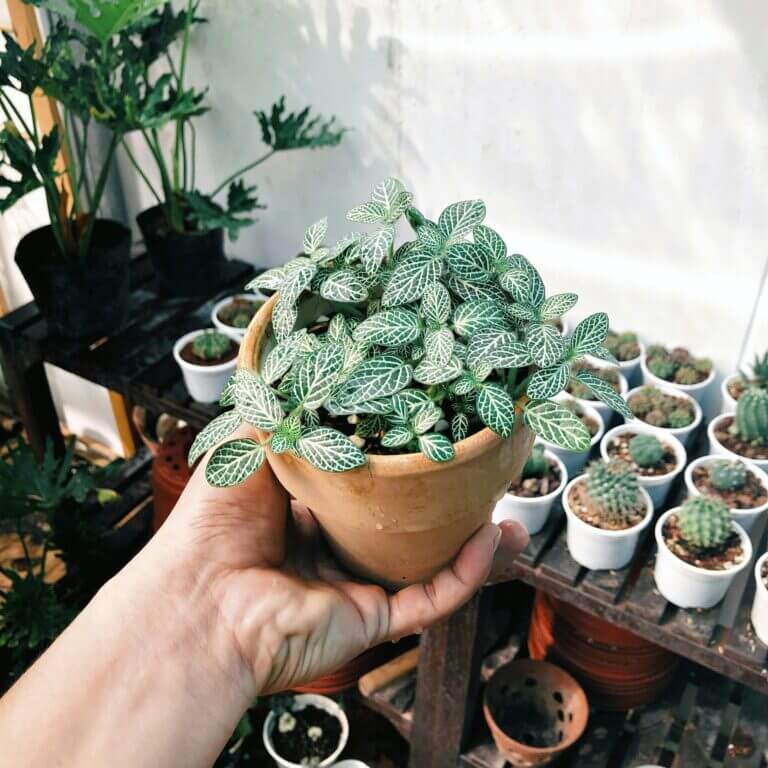Just imagine the joy on your child’s face as they begin on a thrilling scavenger hunt adventure! Planning this exciting activity for kids is easier than you think. Follow these 10 simple steps to create a memorable and fun-filled scavenger hunt that will keep the little ones entertained and engaged from start to finish. Get ready to make unforgettable memories with your kids as you plan this exciting outdoor adventure!
Key Takeaways:
- Engage the kids: Involving children in the planning process can make the scavenger hunt more fun and exciting for them.
- Choose a theme: Selecting a theme for the scavenger hunt adds an element of adventure and imagination for the kids.
- Create challenges: Designing challenging tasks or riddles for the hunt can keep the kids entertained and engaged throughout the adventure.

Step 1: Define the Objective and Age Group
Identifying the Purpose of the Scavenger Hunt
Before plunging into the details of planning your scavenger hunt adventure for kids, you need to clearly define the objective of the activity. Ask yourself why you are organizing this scavenger hunt. Is it to celebrate a birthday, encourage teamwork, or simply to have a fun-filled day outdoors? Understanding the purpose will help you design tasks and clues that align with your goals.
Understanding the Age and Skill Level of Participants
Participants in your scavenger hunt can range from young children to teenagers. It’s crucial to consider the age and skill level of the kids involved to tailor the challenges accordingly. Younger children may need simpler tasks and clues, while teenagers might enjoy more complex puzzles. By knowing your participants, you can ensure that the scavenger hunt is engaging and enjoyable for everyone.
When planning the scavenger hunt, take into account the physical abilities and attention span of the kids. Younger children may tire more quickly and need shorter distances between clues, while older children can handle more challenging tasks. Adapting the scavenger hunt to suit the age and skill level of the participants will make the experience more memorable and enjoyable for everyone involved.
Step 2: Choose a Theme and Location
Selecting a Theme that Sparks Imagination
Imagination is key when selecting a theme for your scavenger hunt adventure. Think about what excites and interests the kids participating. Whether it’s a pirate treasure hunt, a superhero mission, or a nature exploration, choose a theme that sparks their creativity and sense of adventure.
Considering Indoor and Outdoor Location Options
Clearly, when planning a scavenger hunt for kids, you need to consider whether you want to host it indoors or outdoors. Indoor hunts can take place in your home, a school, or a community center, while outdoor hunts can be held in a park, a playground, or even around your neighborhood.
Considering the age group and the number of kids participating will help you decide on the best location for your scavenger hunt adventure. Indoor locations provide a controlled environment, while outdoor settings offer more space to run around and explore.
Ensuring Safety and Accessibility
Now, when choosing a location for your scavenger hunt, safety should be your top priority. Make sure the area is free of any hazards like sharp objects, tripping hazards, or dangerous plants. Additionally, consider the accessibility of the location for all participants, including those with mobility issues.
Location accessibility also means choosing a venue that is easily reachable for all participants and their parents. Ensure there are proper facilities like restrooms and drinking water available, especially if the hunt will last for an extended period.
Step 3: Plan the Hunt Structure and Rules
Deciding on Individual or Team Participation
Now that you have decided to plan a scavenger hunt adventure for kids, you need to decide whether the participants will work individually or in teams. Consider the age group and the dynamics of the kids involved. Individual participation can be more competitive while team participation encourages collaboration and teamwork among the kids.
Establishing Clue Types and Difficulty Levels
You need to establish different clue types and difficulty levels for your scavenger hunt. This will ensure that all kids, regardless of their age or ability, can participate and have fun. Consider using a variety of clue types such as riddles, puzzles, or physical challenges to keep the game engaging. Perceiving the abilities of the kids and adjusting the difficulty levels accordingly will ensure that the scavenger hunt is challenging yet achievable for everyone.
| Clue Type | Difficulty Level |
| Riddles | Easy |
| Puzzles | Medium |
| Physical Challenges | Difficult |
Plan: Setting Time Limits and Scoring Systems
Even though a scavenger hunt is meant to be a fun activity, adding time limits and scoring systems can enhance the competitive spirit and excitement among the kids. Setting time limits for completing the hunt will keep the game moving at a steady pace and prevent any delays. Additionally, establishing a scoring system based on factors like the number of clues solved or the time taken to complete the hunt can add an element of challenge and thrill to the adventure.
Systems that reward not just the fastest team or individual but also factors like creativity, teamwork, and sportsmanship can make the scavenger hunt more inclusive and enjoyable for all participants.

Step 4: Create Engaging Clues and Challenges
Many kids love the thrill of solving clues and riddles during scavenger hunts. To make your scavenger hunt more exciting, it’s necessary to come up with clever and cryptic clues that will challenge their problem-solving skills. When writing clues, think about wordplay, puns, and hidden meanings that will keep the participants engaged and excited to uncover the next hint.
Writing Clever and Cryptic Clues
Cleverly crafted clues can add an extra layer of fun and intrigue to your scavenger hunt adventure. Consider rhyming the clues, creating anagrams, or using codes and ciphers to make the challenges more exciting. By incorporating wordplay and hidden references related to the hunt location or theme, you can create clues that are both challenging and rewarding for the participants.
Incorporating Physical and Mental Challenges
Now, it’s time to think about incorporating physical and mental challenges into your scavenger hunt. Combining tasks that require both physical activity and cognitive skills can make the adventure more dynamic and engaging for the kids. Consider including puzzles, trivia questions, or even small obstacle courses to test their agility and intellect as they progress through the hunt.
Clues that involve physical challenges such as balancing acts, relay races, or even dance-offs can add a fun and competitive element to the scavenger hunt. By blending different types of challenges, you can cater to the various interests and abilities of the participants, ensuring that everyone has a great time solving clues and completing tasks together.
Step 5: Prepare Essential Materials and Equipment
Gathering Necessary Supplies and Props
Despite the excitement of planning a scavenger hunt adventure for kids, it’s crucial to gather all the necessary supplies and props beforehand to ensure a smooth and successful event. Any scavenger hunt requires items like clue cards, maps, pens, and any specific props related to your chosen theme or locations. Make a list of everything you need to avoid any last-minute rushes.
Creating a Scavenger Hunt Kit or Backpack
You can make the scavenger hunt experience more engaging by creating a scavenger hunt kit or backpack for each child participating. You can use small bags or backpacks and fill them with crucial items like a flashlight, magnifying glass, notepad, and pens. You can also include any specialized items needed for specific challenges or clues.
Creating a scavenger hunt kit adds to the excitement and helps the children feel like real adventurers on a mission. Plus, it keeps all the necessary items organized and easily accessible during the scavenger hunt.
Testing and Refining Materials
While gathering supplies and props is crucial, testing and refining them are equally important. Before the day of the scavenger hunt, make sure to test all materials, such as clue cards, maps, and any electronic devices, to ensure they work correctly. You can also refine the clues or challenges based on the age group and understanding of the children participating.
Plus, testing the materials gives you a chance to familiarize yourself with the setup and make any necessary adjustments to enhance the overall experience for the kids.
Step 6: Consider Logistics and Timing
Coordinating with Parents, Teachers, or Chaperones
To ensure the success and safety of the scavenger hunt adventure for kids, it’s important to coordinate with parents, teachers, or chaperones. You can assign specific roles to adults to oversee different aspects of the hunt, such as keeping track of the children, providing clues, or managing any unexpected situations that may arise. Communicating clearly with the adults involved will help the event run smoothly and ensure that everyone is on the same page.
Scheduling the Hunt and Allowing for Flexibility
Assuming you have set a date and time for the scavenger hunt, it’s important to consider the logistics of the event. Plan the route carefully, taking into account the distance between each clue location, the time it will take for children to solve the clues, and any breaks needed. Be sure to allow for flexibility in the schedule in case there are delays or if the children need more time at certain stops. This will help prevent the event from feeling rushed and ensure that everyone can fully enjoy the hunt.
Understanding the importance of flexibility in the schedule is key to a successful scavenger hunt. Unexpected delays or detours can occur, so having some buffer time built into the plan will help you adapt to any unforeseen circumstances. By allowing for some flexibility in the schedule, you can ensure that the kids have a fun and stress-free adventure, even if things don’t go exactly as planned.
Planning for Inclement Weather or Unforeseen Issues
If the weather forecast looks uncertain or there is a possibility of unforeseen issues arising, it’s crucial to have a contingency plan in place. You can prepare for inclement weather by having indoor locations or alternative activities as backup options. Make sure to communicate this plan to the parents, teachers, or chaperones involved so everyone is aware of what to do in case of any emergencies. Having a backup plan will give you peace of mind and ensure that the scavenger hunt can still proceed smoothly, no matter what the circumstances.
It is always a good idea to have a backup plan ready just in case of unexpected challenges during the scavenger hunt adventure. This could involve having extra supplies on hand, such as additional clues or snacks, or arranging for alternative transportation if needed. By thinking ahead and planning for any potential issues, you can handle any situation that arises with confidence and ensure that the kids have a fantastic and memorable experience.
Step 7: Test and Refine the Hunt
Conducting a Pilot Run or Dry Run
Not sure if your scavenger hunt will work smoothly on the event day? Conducting a pilot run or dry run can help you identify any potential issues or bottlenecks in the hunt. Gather a small group of participants, such as family or friends, and run through the entire scavenger hunt as if it were the real deal. This will give you a chance to see how the clues flow, how long it takes to complete each task, and if there are any obstacles that need to be addressed.
Gathering Feedback from Participants and Observers
If you want to ensure that your scavenger hunt is a hit with the kids, gathering feedback from both the participants and observers is crucial. One way to do this is by providing feedback forms at the end of the hunt for participants to fill out. Ask questions about the difficulty level, the clarity of the clues, and overall enjoyment. Additionally, observers can provide valuable feedback on how the hunt looked from an outsider’s perspective.
A successful scavenger hunt is not just about the challenges and clues but also about the overall experience for the kids. By collecting feedback from participants and observers, you can gain valuable insights that will help you make necessary adjustments and improvements to the hunt.
Making Adjustments and Improvements
After conducting your pilot run and gathering feedback, it’s time to make some adjustments and improvements to your scavenger hunt. Analyze the feedback you received, and look for common themes or areas of improvement. This could involve simplifying certain clues, adding more challenging tasks, or tweaking the overall flow of the hunt to make it more engaging.
An imperative aspect of creating a successful scavenger hunt is being open to making adjustments based on feedback. Be mindful of, the goal is to provide an exciting and enjoyable experience for the kids, so don’t be afraid to refine your hunt to ensure it meets their expectations.
This process of testing, gathering feedback, and making adjustments is crucial in refining your scavenger hunt and making it a memorable and fun-filled adventure for the kids. By taking the time to fine-tune your hunt, you can ensure that it runs smoothly on the event day and leaves all the participants with lasting memories.
Step 8: Execute the Scavenger Hunt Adventure
Briefing Participants and Explaining Rules
All set to kick off the scavenger hunt adventure? Now is the time to gather all participants and brief them on the rules. Start by explaining the objective of the game and how it will unfold. Make sure everyone understands the boundaries and any safety precautions they need to keep in mind during the hunt. You can also divide the participants into teams and assign team leaders to ensure smooth coordination.
Managing the Hunt and Providing Support
With the scavenger hunt underway, it’s crucial to manage the game effectively and provide support whenever needed. Make sure to keep track of time and provide regular updates to the participants to maintain the excitement levels. You can station yourself at a central point to act as a resource for teams seeking hints or assistance. Stay flexible and be prepared to adapt the game plan based on how the teams are progressing.
Providing clear instructions and guidance throughout the scavenger hunt will ensure a smooth and enjoyable experience for all participants. Make yourself approachable and available to address any queries or concerns that may arise during the hunt.
Encouraging Teamwork and Sportsmanship
Hunt
Another
Step 9: Debrief and Evaluate the Experience
Gathering Feedback and Suggestions
To improve future scavenger hunts and make them even more enjoyable for the kids, it’s imperative to gather feedback and suggestions. Encourage the participants to share their thoughts on what they liked and what could be better. You can create a simple feedback form or have a casual discussion to collect this valuable information.
Assessing the Success of the Scavenger Hunt
If you want to measure the success of your scavenger hunt, take a look at the overall engagement of the children, their excitement levels, and how well they collaborated with each other during the activity. Additionally, consider whether the challenges were appropriate for the age group and if the clues were clear and fun to solve.
If the kids were actively involved, had fun throughout the hunt, and displayed teamwork, then you can consider your scavenger hunt a success!
Identifying Areas for Improvement
After the scavenger hunt, take some time to reflect on the event and identify areas where you can make improvements for next time. Look at any challenges that may have been too difficult or too easy, assess if there were any logistics issues, and think about ways to enhance the overall experience for the kids.
You can also ask for feedback from parents or other adults who were involved in organizing or supervising the scavenger hunt to gain different perspectives on areas that could be improved.
Step 10: Follow Up and Plan for Future Hunts
After the scavenger hunt is over, it’s necessary to follow up with participants and plan for future adventures. This final step helps keep the excitement alive and encourages ongoing engagement with the activity.
Sharing Photos and Results with Participants
Sharing photos and results with participants is a great way to celebrate the success of the scavenger hunt. You can create a photo album or slideshow to share with everyone involved, highlighting the fun moments and achievements of the day. This not only helps preserve the memories but also fosters a sense of camaraderie among the participants.
Encouraging Continued Exploration and Learning
Follow up the scavenger hunt by encouraging continued exploration and learning. Provide participants with resources such as books, websites, or local attractions related to the theme of the hunt. This can inspire them to continue discovering new things and broaden their knowledge in a fun and interactive way.
This step is crucial in fostering a love for adventure and curiosity in children. By encouraging them to explore further and learn more about the world around them, you are instilling important values that will benefit them for years to come.
Planning and Preparing for Future Scavenger Hunts
Photos
As you wrap up one scavenger hunt, start planning and preparing for future adventures. Reflect on the current hunt to see what worked well and what can be improved upon. Use feedback from participants to tailor the next hunt to their preferences and make it even more exciting and engaging.
Step 10 solidifies the success of your scavenger hunt and sets the stage for many more exciting adventures to come. By following up with participants, encouraging continued exploration, and planning for future hunts, you ensure that the fun and learning never have to end.
Final Words
As a reminder, planning a scavenger hunt adventure for kids can be a fun and memorable experience for everyone involved. By following these 10 exciting steps, you can create a thrilling and engaging activity that will keep the kids entertained and excited throughout the day. Remember to customize the clues and challenges to match the age group and interests of the participants, and don’t forget to consider safety precautions while planning the event.
Overall, organizing a scavenger hunt can be a great way to encourage teamwork, problem-solving skills, and creativity in children. So gather your supplies, get your thinking cap on, and start planning your next adventure-filled scavenger hunt for the kids in your life. Have fun creating unforgettable memories and bonding with your little explorers!
Q: What age group is best suited for a scavenger hunt adventure?
A: Scavenger hunts are great for kids of all ages, but typically work best for children between the ages of 5 and 12. Younger kids may need more guidance and supervision, while older kids can handle more complex tasks and clues.
Q: How can I create clues and tasks for the scavenger hunt?
A: To create clues and tasks for the scavenger hunt, you can start by thinking about the location and theme of the adventure. Consider age-appropriate challenges, such as riddles, puzzles, and physical activities. You can also use props, costumes, and decorations to enhance the experience.
Q: How can I ensure the safety of the kids during the scavenger hunt?
A: Safety should always be a top priority when planning a scavenger hunt adventure for kids. Make sure to set clear boundaries and rules, provide adult supervision, and choose a safe location for the activity. Also, consider any potential hazards or risks and take necessary precautions to prevent accidents or injuries.


















